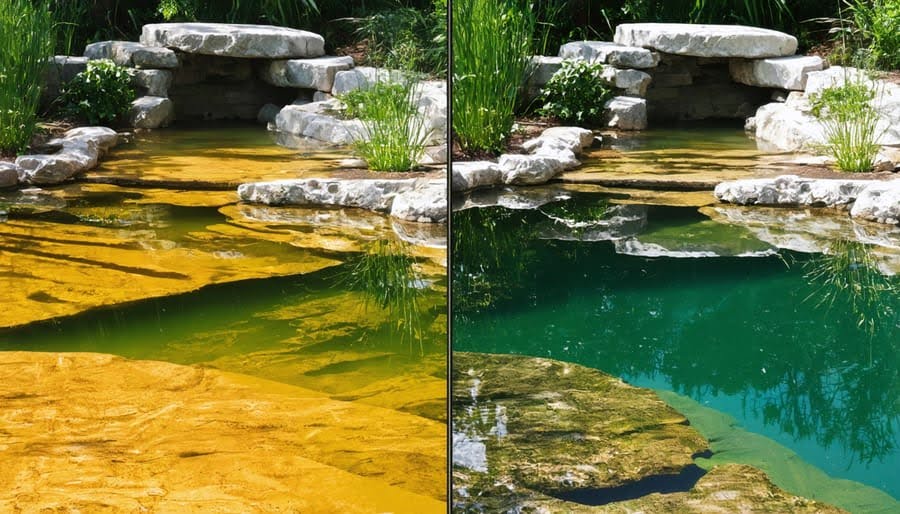How a Dirty Pond Filter Affects Your Water Quality
A pond is more than just a water feature—it’s a living ecosystem. When cared for properly, it becomes a source of beauty, calm, and life. But like any ecosystem, it requires balance. Many pond owners find themselves asking the same question as the seasons change: Does my pond need a deep clean, or will a light refresh do the trick?
The answer isn’t the same for everyone. The needs of your pond depend on its size, depth, the number of fish it holds, surrounding landscape, and especially how well your pond filter performs. Knowing when and how to clean ensures your pond stays healthy without disrupting the delicate balance of plants, fish, and beneficial bacteria.
Understanding Your Pond’s Unique Personality
Every pond has its own identity. A small ornamental pond shaded by trees faces different challenges than a larger koi pond in full sun. Ponds surrounded by heavy foliage, for example, accumulate more leaves and debris, while ponds in open yards may struggle with algae from constant sunlight. Similarly, a lightly stocked pond may go months without trouble, but a fish-heavy pond produces significant waste that quickly builds up if left unchecked.
Because each pond is unique, there is no universal cleaning schedule. Instead, pond owners should learn to observe their water features and adjust accordingly. Sometimes, a quick spring tidy—removing leaves, rinsing the filter, trimming plants—is all that’s needed. Other times, murky water, unpleasant odors, or stressed fish are clear indicators that a more thorough cleaning is required.
Why Gentle Cleaning Often Works Best
It’s tempting to think that more cleaning means a healthier pond, but that’s not always the case. In fact, over-cleaning can strip away beneficial bacteria that naturally process waste and keep water clear. A balanced pond that isn’t overloaded with fish or organic matter can thrive with minimal intervention.
Gentle maintenance tasks like skimming floating leaves, rinsing filter sponges, or topping up with fresh water often go a long way in preserving balance. Trimming back aquatic plants also prevents them from taking over, while adding beneficial bacteria helps restore microbial populations that reduce sludge and break down fish waste.
This approach allows the pond’s natural ecosystem to do the heavy lifting. By minimizing disruptions, you reduce stress on fish, protect water clarity, and promote long-term stability.
The Critical Role of Pond Filtration
At the heart of every healthy pond is a reliable filtration system. A pond filter doesn’t just keep water looking clear; it supports life by removing debris, managing waste, and encouraging oxygen flow. Without it, even the cleanest pond can deteriorate quickly.
High-quality filters, especially pressurized systems such as those from Oase, are designed to trap solid waste while also promoting the growth of beneficial bacteria. This dual-action function helps keep algae under control, reduces the need for frequent clean-outs, and creates a healthier environment for fish and plants.
When your filter is working properly, maintenance becomes less about heavy scrubbing and more about occasional checkups. Investing in the right filter means more time enjoying your pond and less time dealing with cloudy water or foul smells.
When a Full Clean-Out is Unavoidable
Even with good filtration, ponds sometimes reach a point where light maintenance no longer suffices. If thick sludge builds up on the bottom, algae blankets the surface, or odors become noticeable, it’s time for a full clean-out. Other warning signs include cloudy water, poor circulation, or fish showing visible stress.
A complete clean-out gives your pond a fresh start. It usually involves draining the pond, relocating fish, cleaning surfaces, refreshing plants, and resetting or upgrading the filter system. While this process is more intensive, it restores balance and eliminates long-term problems that light maintenance cannot fix.
How Professionals Approach Deep Cleaning
Professional pond services often follow a structured approach to protect both the pond and its inhabitants:
- Fish are carefully relocated to an aerated holding container.
- Water is drained safely using pumps.
- Algae, sludge, and debris are removed from rocks, liners, and pond walls.
- Aquatic plants are trimmed, divided, or replaced if overgrown.
- Filters and plumbing are cleaned, reset, or upgraded as needed.
- Fresh water is added, conditioned, and matched in temperature before reintroducing fish.
This process doesn’t just restore appearance—it also improves circulation, reduces toxins, and sets the stage for healthier long-term pond function. Most ponds benefit from a full clean once every one to two years, though high-maintenance ponds may require it more often.
Choosing the Right Maintenance Routine
Your approach to pond care should reflect your lifestyle as well as your pond’s specific needs. If you have limited time, sticking to seasonal light maintenance combined with a strong filter may be the best balance. This approach prevents issues from escalating while keeping workload minimal.
On the other hand, if your pond is a central landscape feature, home to prized koi, or heavily planted, regular full clean-outs may be necessary. Many pond owners find success alternating between lighter and deeper cleanings each year, striking a rhythm that suits both their water feature and their personal schedule.
Small Habits That Make a Big Difference
Preventing problems is easier than fixing them, and simple habits can extend the time between major cleanings:
- Avoid overfeeding fish—uneaten food sinks, decomposes, and contributes to waste buildup.
- Use pond netting in autumn to prevent leaves from accumulating.
- Plant oxygenating and nutrient-absorbing species such as hornwort, water lettuce, or hyacinth.
- Check and rinse your filter weekly to keep it performing at its best.
- Add beneficial bacteria regularly to strengthen your pond’s natural biofiltration.
These small actions reduce strain on your pond’s ecosystem and keep conditions stable year-round.
Clearing Up Common Questions
Do I always need to clean in spring?
Not necessarily. If your pond remained clean over winter and your filter is working well, light maintenance may be enough.
Why is my water green?
That’s usually algae growth. A good filter, UV clarifier, and shade from plants often solve the issue without draining the pond.
Can I clean my pond too often?
Yes. Over-cleaning can wipe out beneficial bacteria and stress fish. Clean only as needed.
Should I clean my pond myself or hire a professional?
Small ponds are usually manageable with DIY tools and some research. Large, deep, or heavily stocked ponds often benefit from professional expertise.
How can I tell if my filter is working properly?
Check for consistent water flow, clarity, and odor control. If clogs are frequent or water remains murky, your filter may need deeper cleaning or replacement.
Final Thoughts
Maintaining a pond doesn’t have to be overwhelming. The key is observation—understanding what your pond needs and responding accordingly. With the right balance of gentle maintenance, occasional deep cleaning, and reliable filtration, your pond will remain clear, vibrant, and full of life.
A high-quality pond filter isn’t just a convenience—it’s the foundation of a resilient water garden. By combining smart equipment with mindful care, you’ll enjoy sparkling water, thriving plants, and healthy fish for years to come.
Keep an eye for more latest news & updates on Wepbound!






